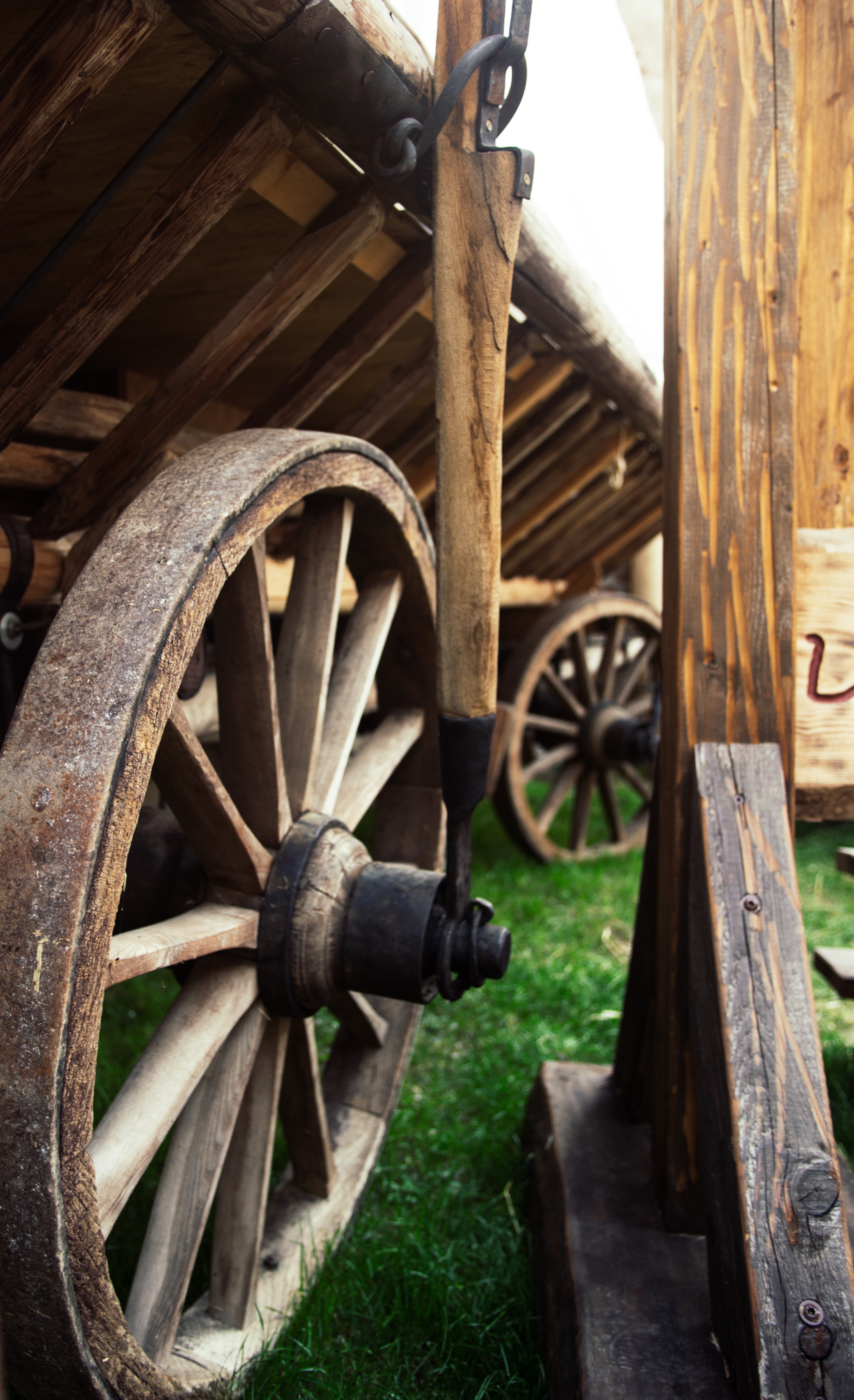War Wagon
Come on we need to get this up on the line now! The sooner we have another wagon up the better the chance we'll live - Rushing SoldierOut of all the things that have been used in war, the wagon has been a part of it for centuries carrying supplies to armies everywhere they even. But the use of the wagon would change when some had the idea to modify it to be used for battle. The idea of the War Wagon is simply really, just a wagon that has been greatly altered to see battlefield use. But no one could imagine the importance and practicality that is brought with it. As it had become a small mobile fort hold soldiers and small artillery to give them protection. Along with its being mobile allows these wagons to be moved when they are needed to create a defensive position that enemy way get past if they wish to process to their destination. This is a lot easier said than done as these wagons can put up a fight if placed in the right conditions.
History
War Wagons would first appear in the far south of Ardania around the eighth century, being first used by peasants defending their homes from bandits in the region. Due to the south being open terrain there was very little material for those trying to build fortification and had decided to use their wagons to at least blood, anyone, from entering their settlements. These wagons would have extra layers of wood to create walls to cover anyone inside of them. These crude makeshift barriers proved to be quite effective as archers were used to rain down arrows on bandits with spearmen protecting the front of them to ensure the enemy was held back. Even if they had cavalry they were unable to get past the wagons as they were too big. Allowing these settlements that used to remain safe from pillaging. Once news of the War Wagons spread they began to be used by the nobility. These wagons would be modified and become another key feature of warfare in Ardania. While wagons have long since been used as a way to transport resources, they have now become a way of defensive warfare and were able to remain moving without being forced to stay in one place. Even allowing untrained peasants that were forced into an army to become dangerous. A few dozen men at a time were placed in these wagons each with their role varying from archer and crossbowmen to spearmen and flails. Making it difficult for even well train cavalry, infantry, Knights to deal with them as they would often have to deal with missile fire raining down on them and then trying to get around a wall of Wagons too heavy for them to life while dealing with long-reaching melee weapons being forced upon them. Creating a tactic that could defeat heavy infantry and cavalry with ease. While War Wagons would have a large role in the common centuries they would often be used for defensive strategies such as wagon forts, barricades, mobile artillery, and roadblocks. Making them become more of a supporting role while the Ardanian began to reform their military to comprise of better infantry and calvary. These wagons would have their day in several conflicts in most recently years Roderick's Rebellion and the War of the Raptors. Proving that they are still capable of use even in an ever-changing world where the old world is beginning to fade away, but its old ways have yet to become obsolete yet.Propulsion
Animals: Like all wagons, they require an animal to pull the ti be able to move. Depending on the animals available or how much an army could afford them these will often be animals that can endure the weight given to them. Animals such as horses and oxen are often the most common to use. But large War Wagons will often require large animals such as Brontos or Hermloc to move and are harder to acquire.
Weapons & Armament
Weaponry: War Wagons can hold weapons that their occupants can both range and pole arms to keep dealing damage from up close and from afar. Along with being able to mount larger artillery weapons that can be fired on them.
Armor and defense
Thick Walls: War Wagons will often have thick movable wooden walls to surround their occupants and protect them from arrows and stones. As well as blocking the bottom of the wagon to ensure that no one could sneak under them to get behind the wagon of damage the flooring.
Murder Holes: Most War Wagons have slits in their wood to allow occupants to fire bolts and arrows at enemies near them without losing any cover. This can be applied to spears a well if an enemy was to get too close.
Infantry Support: Inftary line will often be at the front of a War Wagon to ensure they are not surrounded by overwhelming while continuing to lend support. Units that are stationed near them will often be holding large shields and polearms to create a proper defense between and incoming attackers.
Owning Organization
Price
20 Silver Crowns
Rarity
Uncommon
Width
5 ft - 12 ft
Length
10 ft - 15 ft
Height
8 ft - 13 ft
Weight
120 lbs - 170 lbs
Speed
5 mph - 10 mph
Complement / Crew
2 - 3
Cargo & Passenger Capacity
5 - 40 people




Comments